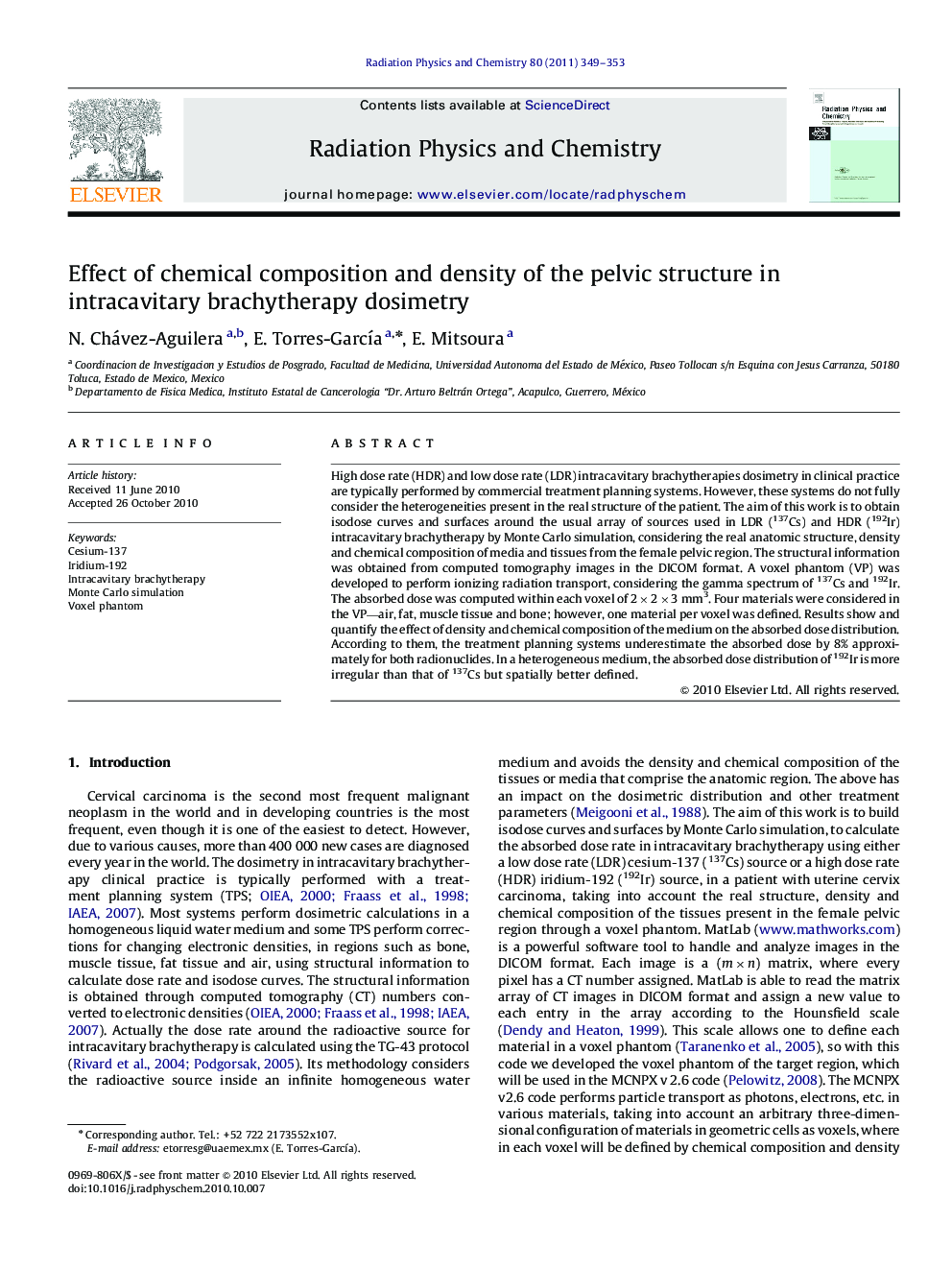| کد مقاله | کد نشریه | سال انتشار | مقاله انگلیسی | نسخه تمام متن |
|---|---|---|---|---|
| 1882779 | 1043261 | 2011 | 5 صفحه PDF | دانلود رایگان |

High dose rate (HDR) and low dose rate (LDR) intracavitary brachytherapies dosimetry in clinical practice are typically performed by commercial treatment planning systems. However, these systems do not fully consider the heterogeneities present in the real structure of the patient. The aim of this work is to obtain isodose curves and surfaces around the usual array of sources used in LDR (137Cs) and HDR (192Ir) intracavitary brachytherapy by Monte Carlo simulation, considering the real anatomic structure, density and chemical composition of media and tissues from the female pelvic region. The structural information was obtained from computed tomography images in the DICOM format. A voxel phantom (VP) was developed to perform ionizing radiation transport, considering the gamma spectrum of 137Cs and 192Ir. The absorbed dose was computed within each voxel of 2×2×3 mm3. Four materials were considered in the VP—air, fat, muscle tissue and bone; however, one material per voxel was defined. Results show and quantify the effect of density and chemical composition of the medium on the absorbed dose distribution. According to them, the treatment planning systems underestimate the absorbed dose by 8% approximately for both radionuclides. In a heterogeneous medium, the absorbed dose distribution of 192Ir is more irregular than that of 137Cs but spatially better defined.
Journal: Radiation Physics and Chemistry - Volume 80, Issue 3, March 2011, Pages 349–353